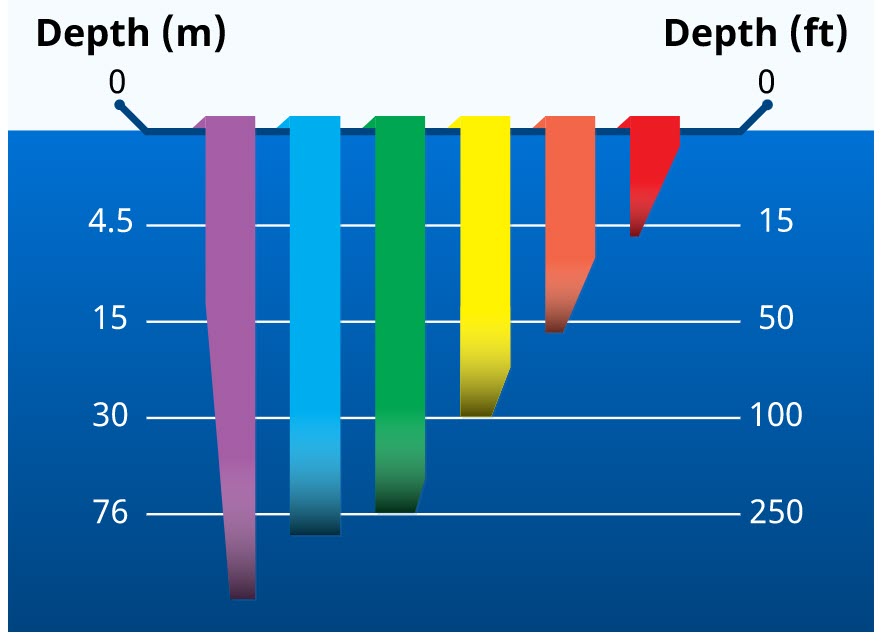Lesson 40
Learning Objectives
By the end of this section, I should be able to answer these questions:
1. How does being underwater affect the apparent size or distance
of things?
2. How does water affect light intensity and color?
3. How does hearing differ underwater?
Seeing and Hearing as a Diver
Section One discussed some of the differences between being on land and being underwater that are part of what make diving unique. Let’s look at how being underwater affects how you see and hear.
Apparent Size and Distance
Water is about 800 times denser than air, which causes many of the differences between the terrestrial and aquatic worlds. One effect of this is that it causes light to change direction slightly (refract) when it transfers from water into the air in your mask.

This direction change magnifies objects by about a third. Depending upon your perspective, objects look larger, closer, or both, than they really are. You may reach for something and miss because it’s farther away than it appears. With experience, you learn to compensate unconsciously.
Color Loss and Scattering
Water also affects light by reflecting, scattering and absorbing it. This means that as you go deeper, it gets darker. During the day, at most popular dive sites you usually have adequate light. On most dives, it doesn’t seem dark at all, though on others, like night dives or when the visibility is poor, it obviously does. In these conditions, you can use a dive light – you’ll get to do this during the Night Adventure Dive in the PADI Advanced Open Water Diver course.
Water also absorbs light directly, but not uniformly. As light travels through it, water absorbs some colors before others. The farther light travels through water, the more color it loses. As you go deeper, red is the first color absorbed, followed by orange, yellow, green and finally blue. You see the same color loss when looking at distant objects. Distant objects tend to become more colorful as you get closer.

Your eyes adjust somewhat for the color change, but shining a light at depth brings back lost color and shows the difference.!
Hearing Underwater
Water affects what and how you hear underwater, because it transmits sound more efficiently than does air. You will hear many new sounds from aquatic life, boats, divers and other sources.
Underwater sound travels over longer distances. For example, a boat that you can’t hear at the surface may sound relatively close underwater.

Sound travels about four times faster in water than in air. This makes it difficult to determine its source – underwater, it usually seems like sound is coming from all around, or directly overhead. You may be able to tell relative change in distance by a sound growing louder or fainter, even though you can’t tell the direction.
Quick quiz
Module Two

I'll take you diving!
Copyright © Larry Wedgewood Scuba Instruction All Rights Reserved

